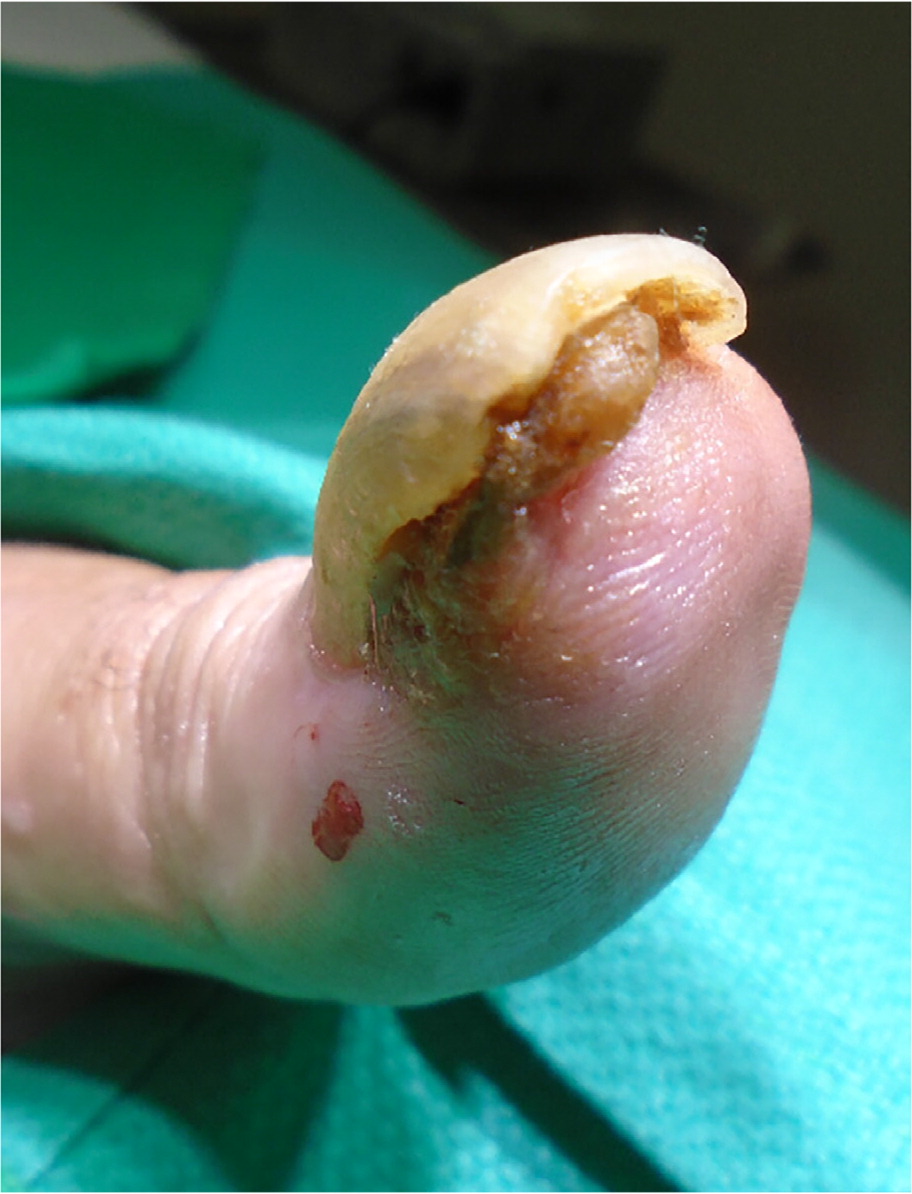
Am Fam Physician. 2025;111(2):177-178
Author disclosure: No relevant financial relationships.
A 68-year-old man presented with a lesion on the distal portion of his left thumb that had been painful for 6 months. He had a similar lesion in the same location 8 years prior but was not sure how it had been treated. The patient did not have any other lesions or symptoms.
Physical examination revealed a hyperkeratotic subungual plaque on his left thumb (Figure 1).

QUESTION
Based on the patient's history and physical examination, which one of the following is the most likely diagnosis?
A. Glomus tumor.
B. Onychomycosis.
C. Psoriatic nail dystrophy.
D. Squamous cell carcinoma.
E. Subungual verruca vulgaris.
DISCUSSION
The answer is D: squamous cell carcinoma (SCC) of the nail unit, which appears to be recurrent in this patient. SCC is the most common malignancy occurring in the nail unit. It most often affects older men. Risk factors include trauma, radiation, smoking, and infection with human papillomavirus types 16 and 18. SCC of the nail unit may present as hyperkeratosis, persistent onycholysis, nail plate dystrophy, or a subungual mass. It should be suspected when patients have verrucous or keratotic lesions of the lateral nail groove or fold that are persistent or recur after destructive treatments used for common warts, such as cryotherapy.
Subscribe
From $180- Immediate, unlimited access to all AFP content
- More than 125 CME credits/year
- AAFP app access
- Print delivery available
Issue Access
$59.95- Immediate, unlimited access to this issue's content
- CME credits
- AAFP app access
- Print delivery available
